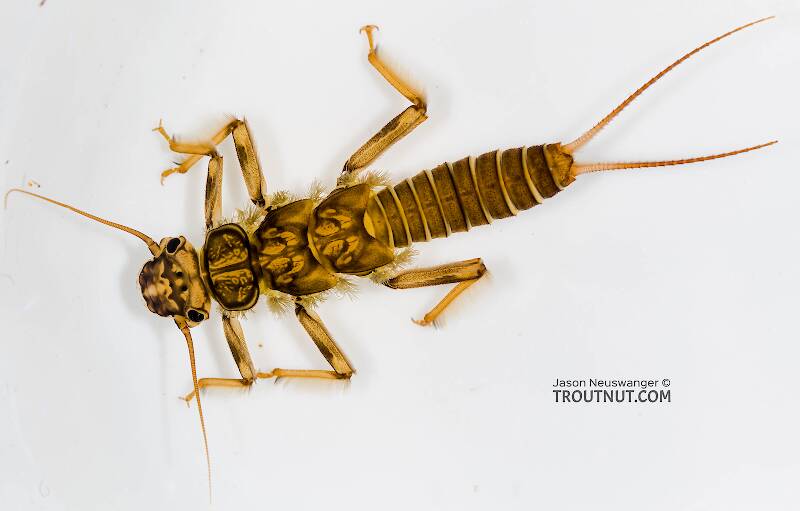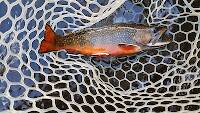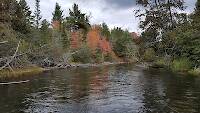
Blue-winged Olives
Baetis
Tiny Baetis mayflies are perhaps the most commonly encountered and imitated by anglers on all American trout streams due to their great abundance, widespread distribution, and trout-friendly emergence habits.
Featured on the forum

Troutnut is a project started in 2003 by salmonid ecologist Jason "Troutnut" Neuswanger to help anglers and
fly tyers unabashedly embrace the entomological side of the sport. Learn more about Troutnut or
support the project for an enhanced experience here.
GoofusBug
Posts: 31
Posts: 31
GoofusBug on Jan 11, 2009January 11th, 2009, 2:36 pm EST
Was reading an article on brook trout which said that brookies most often feed on the bottom.
Is this true in your own experience?
Is this true in your own experience?
UPTroutBum on Jan 12, 2009January 12th, 2009, 9:18 am EST
Pretty broad statement there. On my local streams in northern michigan, I have caught most brookies on nymphs, especially the bigger ones, I have caught some small guys on drys like an adams, never any bigger than 8, maybe its just my luck.
" The true fisherman approaches the first day of fishing season with
all the sense of wonder and awe of a child approaching Christmas." John Voelker
all the sense of wonder and awe of a child approaching Christmas." John Voelker
RleeP on Jan 12, 2009January 12th, 2009, 9:43 am EST
It is sort of a broad statement, but it isn't (IMO) without some modicum of truth, even if it is a more comparative truth.
Here's what I mean by this:
In my experience, of the 3 species of trout/char most of us fish over in the East/Midwest, I have found that day in and day out, brook trout are the least likely to be free-rising. This is among wild populations and presumes we are not talking about fish that live (as brookies often do..) in a setting sufficiently infertile that they cannot afford to let virtually any feeding opportunity pass.
I don't think the difference in this between the species is that pronounced, but I do think it is real.
Here's what I mean by this:
In my experience, of the 3 species of trout/char most of us fish over in the East/Midwest, I have found that day in and day out, brook trout are the least likely to be free-rising. This is among wild populations and presumes we are not talking about fish that live (as brookies often do..) in a setting sufficiently infertile that they cannot afford to let virtually any feeding opportunity pass.
I don't think the difference in this between the species is that pronounced, but I do think it is real.
Quick Reply
Related Discussions
Topic
Replies
Last Reply
7
Jun 25, 2019
by Wbranch
by Wbranch
Re: A quiet night on the Rifle, but I conjured up a nice one anyway 




In the Photography Board by Jmd123
+ 4





In the Photography Board by Jmd123
5
Jul 25, 2018
by Adirman
by Adirman





